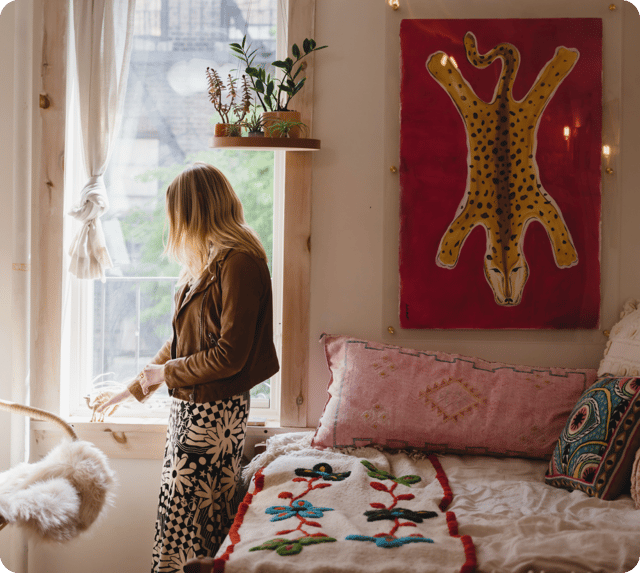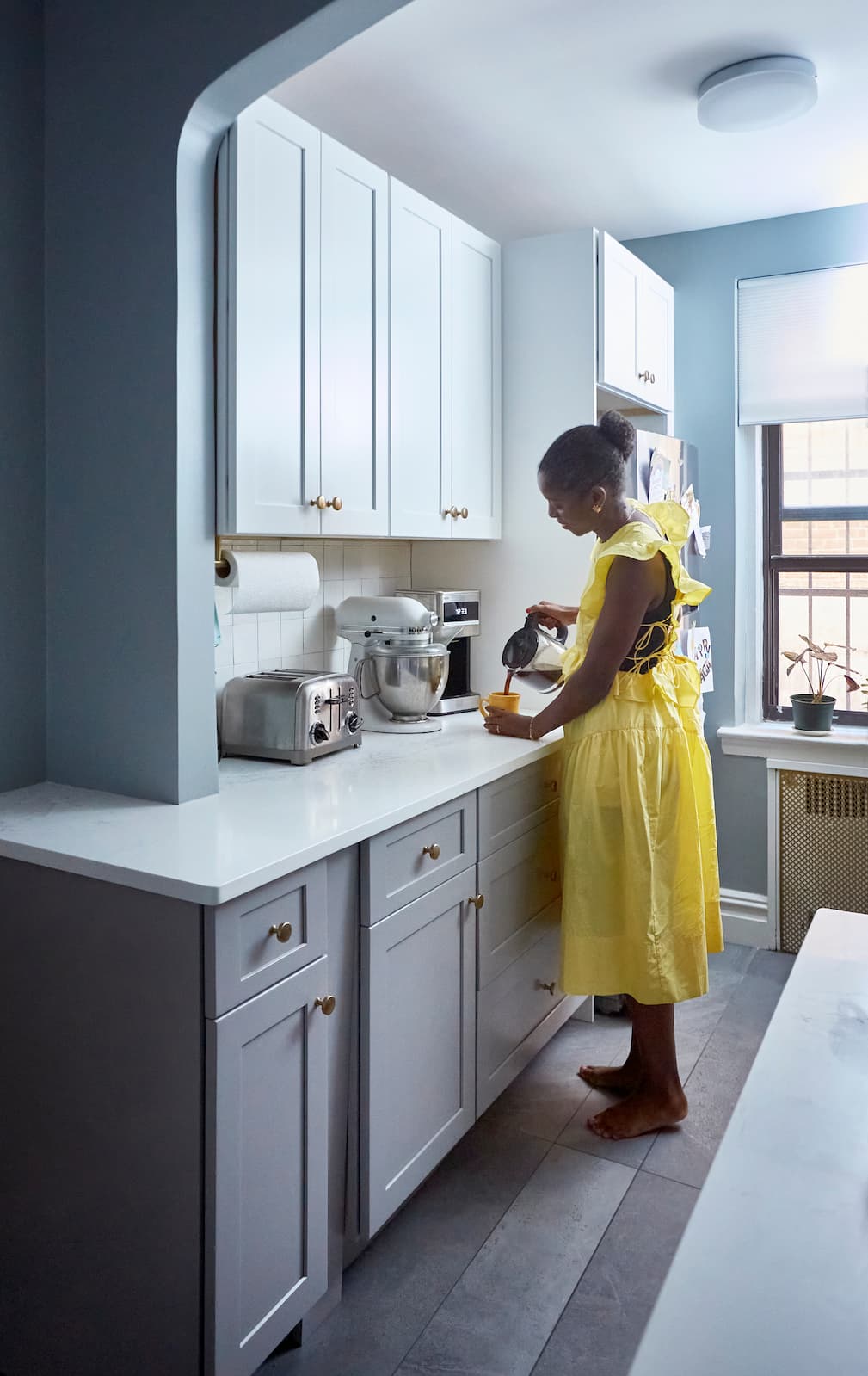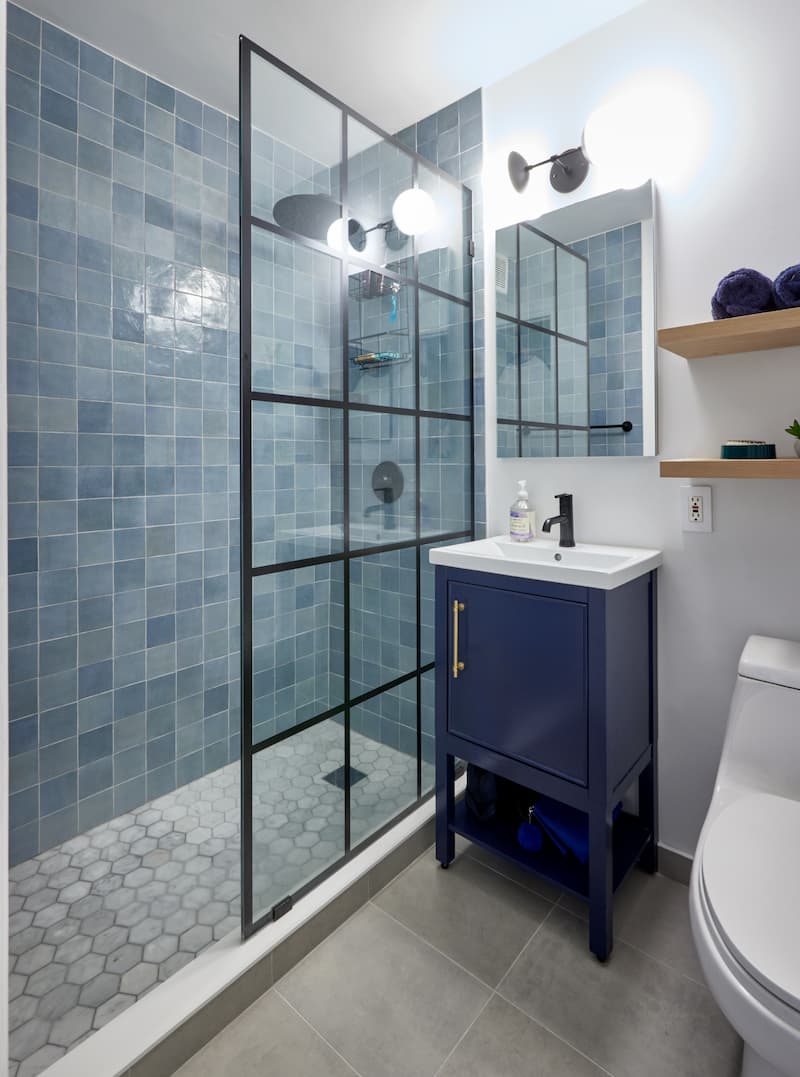How Much Does It Cost to Add a 12x12 Room to a House?

In This Article
Adding a 12x12 room to your home is a great way to increase living space, improve functionality, and boost property value. Whether you're building an in-law suite, a home office, or an additional bedroom, understanding the costs associated with this type of home addition is essential for budgeting and planning.
The cost of a 12x12 room addition varies significantly based on factors such as the room’s purpose, materials used, labor rates, and location.

"An addition this size has a lot of options for use, and for resale value."
Meredith Sells, Block designer
On average, homeowners spend between $18,000 and $75,000 on this type of project, with costs typically ranging from $125 to $250 per square foot. High-end additions with luxury finishes or specialized features can push the price beyond $50,000.
This guide will provide an in-depth breakdown of the costs involved, factors influencing the price, budgeting tips, financing options, and strategies to save money while maintaining quality.
Average cost of a 12x12 room addition
The cost of adding a 144-square-foot room depends on various factors, including whether it's a basic addition or one requiring extensive plumbing and electrical work. Here’s a breakdown of common cost estimates:
- Basic room addition (e.g., a simple bedroom or office): $18,000 - $30,000
- Bathroom addition (including plumbing and fixtures): $30,000 - $50,000
- Sunroom addition (windows, HVAC, insulation): $20,000 - $50,000
- Kitchen expansion (appliances, plumbing, countertops): $40,000 - $75,000
A general rule of thumb is that the more complex a project is, the higher its cost. Kitchens and bathrooms tend to be the most expensive due to plumbing, ventilation, and high-end finishes, while simple bedroom additions cost less.
Factors that influence the cost of a 12x12 room addition
Since a room addition cost often ranges, it’s a good idea to know how the money you’re spending is allocated. Understanding all the components can help you budget smarter. Here’s what to keep in mind when planning your project:
1. Room functionality and purpose
The intended use of the room significantly impacts the final cost. For example, a 12x12 bedroom or home office is typically half the cost of a bathroom or kitchen addition of equal size because you do not have to worry about adding extra plumbing, specialized electrical work, and costly fixtures or appliances.
“An addition this size has a lot of options for use, not only on day one, but also down the line for resale value,” says Meredith Sells, Block designer. “I would recommend creating the most versatile space you can with the addition.” Here are options to consider:
- Bedroom/Home office: Basic structural work with minimal electrical and HVAC extensions.
- Bathroom: Requires additional plumbing and waterproofing, increasing costs.
- Kitchen: Includes electrical wiring, plumbing, countertops, and appliances, making it the most expensive.
- Sunroom: Often requires custom windows, additional insulation, and HVAC modifications.
2. Construction materials and finishes
In addition to the required expenses, the type of materials and finishes you use is going to dictate your budget. A marble floor is going to cost you a lot more than vinyl planks. Walls and ceiling molding is another pricey touch. Don’t forget to work in the cost of windows and insulation into the total cost of your 12x12 addition.
- Standard materials: Drywall, basic flooring, and prefabricated windows reduce costs.
- Premium materials: Hardwood flooring, custom cabinetry, and high-end custom windows increase expenses.
- Insulation and energy-efficient materials: Higher initial cost but can reduce long-term energy bills.
3. Labor costs
Labor is a major expense in any home addition project. The cost of hiring carpenters, electricians, plumbers, and painters can vary based on location and complexity.
- General contractor fees: 10-20% of total project cost
- Carpentry and framing: $30 - $50 per square foot
- Plumbing and electrical work (if needed): $125 - $150 per hour
- Painting and drywall installation: $2 - $6 per square foot
4. Geographic location
Building costs differ by region, with urban areas typically having higher labor and material costs than rural locations. Expect to pay the most if you live in a coastal metropolitan city.
- High-cost areas (e.g. California, New York, Washington, D.C.): $200 - $300 per square foot
- Mid-range cost areas (e.g. Texas, Florida, Midwest): $150 - $200 per square foot
- Low-cost areas (e.g. rural areas): $125 - $175 per square foot
5. Permits and building codes
Most home additions require permits, which add to the overall cost of the 12x12 addition. These fees vary depending on local regulations, but typical costs fall into these ranges:
- Building permit: $500 - $2,000
- Electrical permit: $100 - $500
- Plumbing permit: $150 - $600
Ignoring permit requirements can lead to fines or costly legal issues, so it’s important to check with your local building department before starting the project. If your home is in a historical area, you may also have to talk to the Architectural Review Board before starting on such a project.
Transparent Pricing You Can Trust

Detailed cost breakdown of a 12x12 room addition
To help you set a realistic budget, you’ll want to request several quotes from contractors, plumbers, and electricians. It’s always good practice to consult at least three professionals for quotes. Block Renovation takes the guesswork out of this process, matching you with vetted contractors so you can compare bids and hire the expert who works best for your needs.
Here is a breakdown of common room addition costs:
1. Foundation and framing costs
Putting down a foundation is the first step to any room addition. This may entail clearing out the area around your house and leveling the ground. Consider whether you’ll have to spend more to remove landscaping, such as surrounding bushes or trees, to make space for the new room.
If you are adding a second-story addition, reinforcing the foundation can increase costs by several thousand dollars.
- Foundation (slab or crawl space): $4,000 - $12,000
- Framing and structural work: $1,500 - $6,000
2. Exterior work, roofing, and windows
No room is complete without a roof. Not only will you need to add on the structural components, but you’ll also have to decide on the roofing material for your room addition. For instance, asphalt roofs are less expensive than metal roofs. Historical and luxury homes often have slate or cedar shingle roofs, which come at a premium.Matching new roofing and siding with the existing home design can add extra expenses, especially if original materials are not easily accessible.
Adding windows is another expense that should not be overlooked. The cost of the window depends on the material used. Vinyl windows are the least expensive option, but they typically don’t last as long as higher-quality options. Fiberglass windows are known for their reasonable price and durability.
- Roofing extension: $2,000 - $6,000
- Siding and exterior walls: $1,500 - $5,000
- Windows and doors: $2,000 - $8,000
3. Interior finishes
Structural changes are not the only thing to consider. Once the room is set, you want the design to align with the rest of your home’s interiors. You’ll start with drywall and insulation installation for the walls, then decide how you want that painted. Limewash and plaster paint are some unexpected but popular options that can completely transform the feel of your space. When it comes to floors, decide if you want to stretch your budget for hardwood flooring, invest in artsy tiles, or stick to plush carpet.
- Drywall and insulation: $1,000 - $3,000
- Flooring (hardwood, tile, carpet): $1,000 - $4,000
- Painting and trim work: $500 - $2,000
4. Electrical, plumbing, and HVAC
Unless you have a serious background in construction and home improvement, electrical, plumbing, and HVAC work is not something to DIY. Reach out to professionals to give you an estimate for your upcoming project. Some contractors partner with electricians and plumbers and will give you an estimate for the entire 12x12 room addition.
- Electrical wiring and outlets: $1,000 - $3,000
- Plumbing (if needed for bathrooms/kitchens): $1,500 - $5,000
- HVAC system extension: $1,000 - $3,000
How to budget and finance your 12x12 room addition
Before you break ground for a new room addition, outline all of the potential costs with an estimated budget that takes everything into account—from material and labor costs to lending fees. Here is what to do before you get started.
Create a budget
- Get at least three contractor estimates to compare pricing.
- Set a contingency fund (at least 10-15%) for unexpected costs. If you’re renovating a kitchen, you might want to add a separate budget for eating out while the space is under construction.
- Consider DIY for simple tasks like painting to reduce labor costs.
Consider financing options
If you don’t have cash on hand, several financing options can help fund your home addition:
- Home equity loan: Lower interest rates, using your home's value as collateral.
- Personal loan: Higher interest rates but good for small additions.
- Cash-out refinance: Refinancing your mortgage to access funds.
- Heritage loan: Some areas with historical homes offer lower-rate loans for older home renovations.
Compare Proposals with Ease

Cost-saving strategies for a 12x12 room addition
Expanding your home is a significant investment, but there are smart ways to manage costs without sacrificing quality or comfort. Once you get a better sense of forthcoming expenses, decide what is a must-have and what is a nice-to-have. You certainly don’t want to cut corners on quality construction, but definitely do your due diligence and compare quotes—this can mean thousands in savings. To cut down on costs, you may want to:- Use prefabricated or modular additions to save on labor costs.
- Limit custom designs and high-end finishes to stay within budget.
- Be smart about heating and cooling your addition.
- Build during the off-season when contractor rates are lower.
- Do some of the work yourself (painting, landscaping, etc.).
Here are other proven strategies to help you get the most value from your 12x12 room addition.
Plan with precision
A well-planned project is less likely to run into costly surprises. Start by clarifying your goals for the newly added room—how will it be used, and what features matter the most. Do you prize large windows that stream in natural light or prefer the luxe finish of hardwood floors? Share your vision with your contractor and ask for their input on where you can save without compromising on essentials. Early planning also helps you avoid expensive change orders down the line.
- Create a detailed wish list, then prioritize must-haves versus nice-to-haves.
- Review your plans with your contractor to spot potential cost drivers early.
- Visual renderings can ensure that everyone has the same understanding of the 12x12 room addition, helping to avoid costly detours due to miscommunication.
- Ask for a line-item estimate to see exactly where your money is going.
- Consult with a Block Renovation Project Planner for an expert review of your contract and project scope. They can help ensure your plans are realistic, align with industry standards, and protect you from unexpected costs.
Choose materials wisely: Where to save and where to invest
Material choices have a major impact on your 12x12 room’s budget. While it’s tempting to splurge on every finish, focusing your investment on high-impact areas can help you stay on track.
- Use standard materials for walls, ceilings, and trim—these are often just as durable as premium options.
- Consider mid-range flooring or prefabricated windows, which offer a balance of quality and cost.
- Reserve your budget for one or two standout features, like a statement window or upgraded lighting fixtures.
Pro tip: Ask your contractor about overstock or discontinued materials. These can offer significant savings without sacrificing style.
Streamline architectural choices
Complex architectural features—like vaulted ceilings, custom shapes, or extensive built-ins—can quickly drive up the cost of your room addition. A straightforward design is not only more affordable to build, but can be customized down the line.
- Stick to a simple rectangular footprint.
- Minimize structural changes to your existing home—this means paying attention to support beams.
- Limit the number of windows and doors, or use standard sizes.
Be smart about HVAC
“One way to potentially save on an addition is to have the heating and cooling controlled separately from the rest of the house,” says Sells. “This can save on expensive duct-work or extended systems. Instead, mini-splits and/or under-floor heating can provide a lot of comfort at a fraction of the price.”
Time your project for savings
Contractor availability and material prices can fluctuate throughout the year. Scheduling your project during the off-season—typically late fall or winter—may help you secure better rates and faster timelines.
Here are some questions you should ask your contractor during the initial consultation:
- Are there times of year when labor or materials are less expensive in your area?
- Can your contractor offer a discount for flexible scheduling?
- Are there any discontinued or salvaged materials that could work for this project?
Consider prefabricated or modular options
Prefabricated or modular room additions are built off-site and assembled at your home, reducing labor time and often lowering costs. These options can be especially appealing for straightforward spaces like bedrooms or offices.
Perks of modular options include the following:
- Faster construction timelines
- Fewer weather-related delays
- Predictable pricing
Take on select DIY tasks
While structural work and utilities should always be left to professionals, there are areas where homeowners can contribute without jeopardizing the entire room addition. Painting, landscaping, or even installing simple fixtures (if you have prior knowledge of plumbing and electrical work) can help trim your budget.
Try these DIYs to cut down on costs:
- Interior painting
- Installing hardware or shelving units
- Planting basic landscaping around the new addition
Caution: Be honest about your skill level and time commitment. Mistakes can be costly to fix, so focus on tasks you’re comfortable handling.
Get multiple quotes and compare proposals
Prices for the same project can vary widely between contractors, even if they are based in the same area. Gathering at least three detailed quotes gives you a more accurate perception of the market rate and helps you spot outliers—both high and low.
To get the most out of your project estimates, look for the following:
- Transparency: The total project should have line items outlining what goes into the full estimate.
- Clear descriptions of line items: This should include the size, material, and quantity
- References and examples: A reputable contractor will always help you connect with past clients for references and show examples of similar projects.
Pro tip: Block Renovation’s platform allows you to compare multiple contractor proposals side by side, making it easier to evaluate scope, pricing, and quality and assist you in making a confident, informed decision.
Avoid scope creep
It’s easy for a project to grow beyond its original plan, especially once construction is underway. Each change—no matter how small—can add up quickly.
Here is how to prevent unintended detours and added costs:
- Scrutinize the scope of the room addition from the get-go—Block Renovation can help with this, as your designated Project Planner can bring forth any gaps or inconsistencies to your attention.
- Finalize the design and order materials before work begins to avoid any shipping holdups.
- Resist the urge to make changes mid-project unless it is absolutely necessary.
- Communicate with your contractor on a regular basis.
Comply with local zoning and building regulations
Before breaking ground, it’s essential to confirm that your addition meets all local zoning requirements and building codes. These rules can affect everything from the size and height of your addition to how close it can be to your property line.
- Non-compliance can lead to costly delays, fines, or even having to modify or remove completed work.
- Zoning rules may impact your design, so it’s best to address them early in the planning process.
Know the Cost Before You Start

Build with confidence using vetted local contractors
Working with an experienced, licensed general contractor is key to avoiding costly zoning violations or design modifications. They’ll be familiar with local regulations, can help you navigate the permitting process, and will ensure your project is built to code. Block Renovation matches homeowners with vetted contractors who understand the ins and outs of local requirements, giving you added peace of mind from start to finish.

Written by Block Renovation
Frequently Asked Questions
How long does it take to build a 12x12 room addition?
Is it cheaper to add a room or build up?
What type of room addition adds the most home value?
Do I need a permit to add a room to my house?
Can I build a room addition myself?

Renovate confidently with Block
Easily compare quotes from top quality contractors, and get peace of mind with warranty & price protections.
Thousands of homeowners have renovated with Block

4.5 Stars (100+)

4.7 Stars (100+)

4.5 Stars (75+)
Renovate confidently
- Top quality contractors
- Warranty & price protections
- Expert resources

